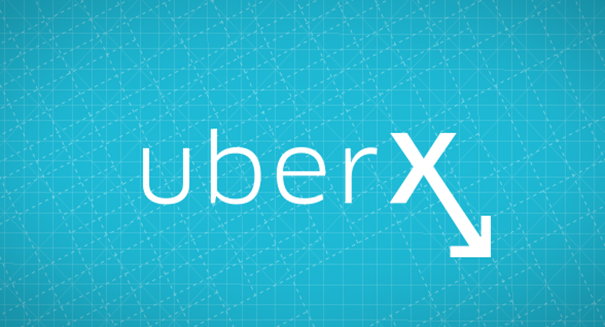
Transportation startup Uber works overtime to ensure they're the cheapest game in town
Uber, the startup recently in the news for its controversial “surge pricing” policies, announced in a blog post Thursday that it would be cutting rates for UberX, the already-cheaper alternative to their flagship town-car service. 16 cities in all will see prices drop, with six in particular getting rates cut anywhere from 15% to as much as 34%.
The announcement appears to be an obvious tactic aimed at supplanting the existing taxicab infrastructure in most major cities. Uber already offers many perceived advantages over cabs: Customers can order a ride instantly via the phone app, see estimated costs for their trip, and avoid awkward transactions by having the fare deducted from their account automatically. The only advantage cabs have in some locales is price, and with the rate cut, Uber seems to be whittling away at that advantage.
“We’re going all-in on being the cheapest ride in town,” Uber CEO Travis Kalanick wrote in the blog post, saying that price cuts are necessary to help more people experience the “Uber magic.”
Chicago, San Francisco, Seattle, Los Angeles, Phoenix and Orange County, California, will see the biggest fare cuts, the blog said. Minneapolis, Atlanta, Sacramento, Tucson, Indianapolis, Denver, Dallas, Baltimore, Charlotte, Nashville are also scheduled to receive reduced pricing. Prices for its town-car, SUV, and luxury car services are expected to remain stable.
Notably off that list is New York, where controversy over Uber’s “surge pricing” recently came to a head. During times of high demand (rush hour, holidays, inclement weather etc.), Uber is very transparent about increasing rates accordingly. The surge, they say, encourages more drivers to work to meat the increased demand. During a recent snow storm in New York late last year, Uber prices surged to as much as 9x, resulting in fares of several hundred dollars just to travel a block or two.
Opponents point to this as an example of “price gouging,” though that’s something of a misappropriation of the term. Unlike, for instance, gas stations quadrupling rates on the news of an impending hurricane, Uber is a convenience product, no matter how bad the weather gets.
The Chicago Tribune reports that under the new fare structure, rates in the Los Angeles area between Beverly Hills and Santa Monica would run $15.83 via UberX, compared with $26.80 for a cab, he said. In the Boston area, a trip from Beacon Hill to Harvard Square would run $12.55 for UberX, compared with $19.37 for a taxi.
That undercutting is a part of why Uber has trouble putting down roots in some cities. Though now available, Uber faced legislative opposition at every step of the way before being allowed to operate in the Washington, DC region. Uber is still prohibited from operating in Miami, mostly due to lawsuits from taxi cab commissions and companies.
Considered one of the fastest growing startups in Silicon Valley, Uber is currently valued at around $3.5 billion. Its future is still unclear, however, as similar competitors continue to pour in. As for what’s next, that’s anybody’s guess.
“… what if some of those [price ] cuts pushed the envelope of what we even think is possible?” Kalanick posited in the blog post. What if, indeed.
Leave a Reply